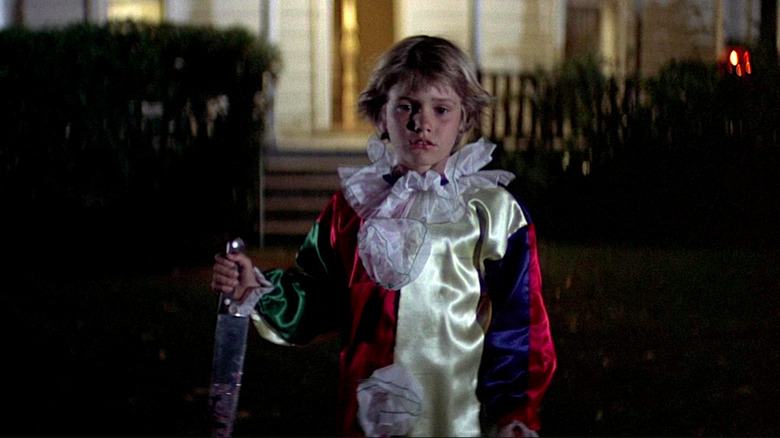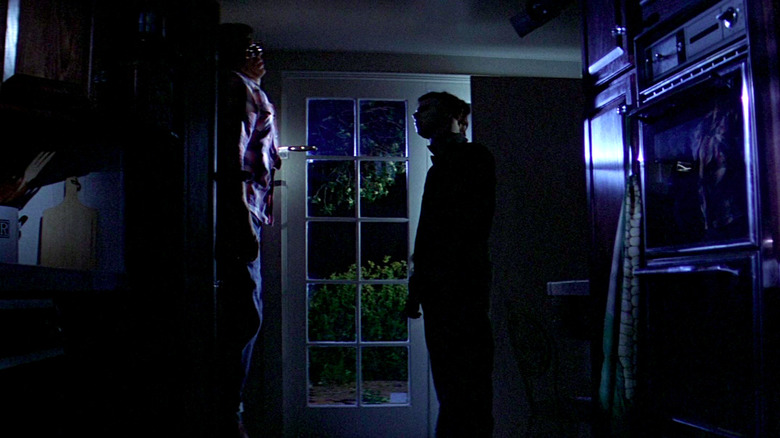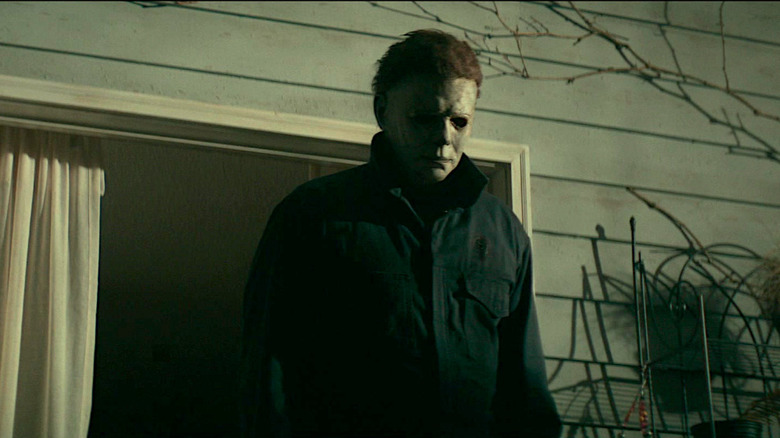Michael Myers Came From A Memory John Carpenter Could Never Forget
Whether it's the pale, white face of a repurposed William Shatner mask or the familiarity of the baggy, blue mechanic jumpsuit, Michael Myers is undeniably recognizable as one of horror's most iconic figures. The creation of mastermind John Carpenter, Michael first stalked into our hearts in the 1978 classic, "Halloween," and he's been terrorizing us with his eery silence and love of kitchen knives ever since. Generations of horror fans celebrating his signature stealth, and his presence around October 31st is almost as universal as craftily carved Jack-o-lanterns and bags of candy corn.
It's safe to say that over the years, the character of Michael Myers has taken on a life of his own. Fans of the infamous slasher can now buy anything from replica costumes to novelty tees with Michael depicted on tarot cards and in famous impressionist paintings (because nothing says "Monet" like a good old fashioned killer). But while much of Michael's existence now runs the way of popular entertainment character, his actual origins are decidedly much more somber. In fact, Carpenter was inspired to create the character after a unique experience he had during college that left a strong impression on him.
A life-changing experience
During his time in college, Carpenter took a course in psychology. It is here where his first inspiration for the character of Michael Myers originated. In the documentary, "Halloween: A Cut Above the Rest," Carpenter goes into detail about the class saying, "We visited a mental institution, and this was in Kentucky, and [we] visited the most serious mentally ill patients." He describes his experience meeting a young boy who "must [have] been 12 or 13." According to Carpenter, the boy was staring into the distance in a way that Carpenter found uncomfortable. He explains in the documentary that the boy's disposition inspired the famous lines in "Halloween" when Donald Pleasence's character Dr. Loomis describes Michael. In the film, Pleasence says,
"I met this six-year-old child with this blank, pale, emotionless face, and the blackest eyes. The devil's eyes. I spent eight years trying to reach him, and then another seven trying to keep him locked up. Because I realized that what was living behind that boy's eyes was purely and simply evil."
To Carpenter, the experience with this young man left him feeling unsettled. "It was like the creepiest thing I'd ever seen, just because it's a stranger, and he was completely insane," he explains. Carpenter describes the boy's behavior as being indicative of someone living with schizophrenia, and it is this specific encounter in Carpenter's life that led him to the creation of Michael Myers.
Separating the man from the myth
The character of Michael Myers is mythical. He often exhibits superhuman strength and the ability to seemingly never be killed (Change my mind, "Halloween Ends"), and though it's true that he does at times display classic characteristics of those living with schizophrenia, his character over the years has developed into something more akin to a spirit or devil possessing the body of a human. In short, he is more monstrous than reflective of someone living with a mental illness. It can be troubling then, to talk about his origin story as one linked to a real life person with a mental health issue.
While many character origin stories are based on real experiences, in the case of Michael Myers, we should be careful to separate the person on screen from the young man who inspired him. Mental illnesses are a heartbreaking real reality for many, and those living with them are not necessarily reflective of a character like Michael Myers. While Carpenter was no doubt affected by his college experience, the character of Michael should not be equated with those living with schizophrenia, and using language like "creepy" and "insane" to refer to those with mental health issues should be avoided. Michael Myers is an exceptional slasher villain, but this villainy is unique to his existence as a horror character.


